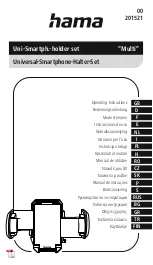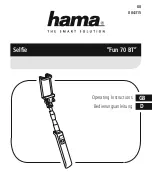
112
Specifying a Reference Plane
By default, the leveling wafer indicates absolute degrees of inclination, which is relative to a plane perpendicular to
the direction of the earth’s gravitational force. You can specify a different reference plane, and the leveling wafer
will indicate degrees of inclination relative to that plane.
To specify a reference plane:
1)
Place the leveling wafer on the surface that you want to use as your reference plane.
2)
Choose the menu item
Settings > Set Reference Plane
. The leveling wafer takes the current absolute
inclination readings as offsets to the new relative plane. The offsets are displayed in the Horizontal reference
plane readouts.
3)
Select the
Relative to
option above the Horizontal reference plane readouts.
You can switch the leveling wafer between indicating absolute and relative inclination by clicking the
corresponding option button (see the figure above). Switching between
Absolute
and
Relative to
does not affect
the current offsets for the reference plane inclination angles; MultiView retains the last offsets until you change
them.
When you specify a reference plane and set MultiView to display
Relative to
that plane, the coordinate axes of the
left bubble-display shift within the display area, as shown below.
This shift in the axes reflects the fixed range of the leveling wafer relative to absolute level. For a leveling wafer
that has a range of -4 degrees to +4 degrees from absolute level, if you set a reference plane at -2 degrees absolute
pitch, the range of the leveling wafer relative to that reference plane is -2 degrees to +6 degrees pitch. Shifting the
center of the bubble display to the left accurately represents the new range of the leveling wafer relative to the
reference plane.
For more information on the working range of different models, see “
















































